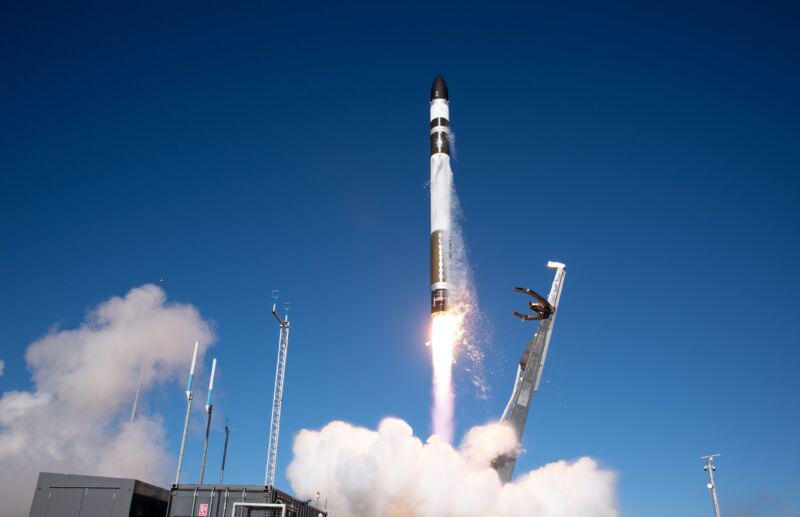
Rocket Lab launched its 40th Electron mission this week and achieved an important milestone in its quest to reuse orbital rockets. As part of the mission, the launch company reused a previously flown Rutherford engine on its first stage for the first time.
In terms of orbital rockets, only NASA's space shuttle and SpaceX's Falcon 9 vehicles have demonstrated the capability of re-flying an engine. With Rutherford, Rocket Lab has now also flown a rocket engine that landed in the ocean for the first time.
Shortly after the Electron mission, which launched a satellite for Capella Space on Thursday morning from New Zealand, Rocket Lab chief executive Peter Beck confirmed that the Rutherford engine performed well in its second flight. "The data is in, perfect performance from the reused engine and the stage," Beck said on X, the social networking site formerly known as Twitter.
Learning to fly a second time
Electron is a small launch vehicle that made its debut in 2017 and has a first stage that is powered by nine Rutherford engines. To date, Rocket Lab is the only company in the world with a small launch vehicle that has successfully and repeatedly flown. In the six years since Electron's debut, a handful of other companies have reached orbit, including Astra and Virgin Orbit. However, both of these companies struggled with consistent success, and Virgin Orbit went bankrupt earlier this year.
Rocket Lab has been taking tentative steps toward reusing its Electron rockets in recent years, first by gathering data about the vehicle's fiery return through the atmosphere and then attempting to catch the rockets with a helicopter as they fell beneath a parachute. Finally, the company has decided the most workable method was to splash the Electron first stage into the ocean and then quickly recover the vehicle to prevent saltwater intrusion.
So why not land on a barge? Electron is small enough that the mass penalty for attempting to vertically land the vehicle, in terms of propellant, landing legs, and other structures, would remove its capacity to lift any payload to orbit at all. So Rocket Lab engineers have had to be creative about their approach.
Beck told Ars that the company is learning what it can from Electron as it designs and develops a larger orbital rocket, named Neutron. This medium-lift vehicle is intended to compete with SpaceX's Falcon 9 rocket and will have the capability to land both back at the launch site and upon a drone ship down range. Neutron is being designed to deliver 8 metric tons into low-Earth orbit if the booster returns to the launch site, 13 tons with a down-range landing, and 15 tons in fully expendable mode.
"In a utopian state, you would always return to the launch site because you don't have the challenge of landing on a barge or the transit time back," Beck told Ars earlier this month. "So that was where we focused our efforts at. But people really want to use that extra capacity."
This reuse thing is not a fad
What does seem clear, with the re-flight of this engine, is that the industry's adoption of reusable rockets is accelerating. Whereas SpaceX was the anomaly in 2015 when it first landed an orbital booster and then flew a first stage for the second time in 2017, the company is now not alone.
Nearly every commercial development program for medium- and heavy-lift rockets in the world today has a component of reusability, whether for the first stage engines, in the case of United Launch Alliance's Vulcan rocket, or for the entire vehicle itself, with Blue Origin's New Glenn rocket and its Jarvis upper stage.
With Rocket Lab, this is no longer theoretical. It is happening. And this trend, which seemed so improbable as recently as five to seven years ago, now seems irreversible.



3175x175(CURRENT).thumb.jpg.b05acc060982b36f5891ba728e6d953c.jpg)
Recommended Comments
There are no comments to display.
Join the conversation
You can post now and register later. If you have an account, sign in now to post with your account.
Note: Your post will require moderator approval before it will be visible.